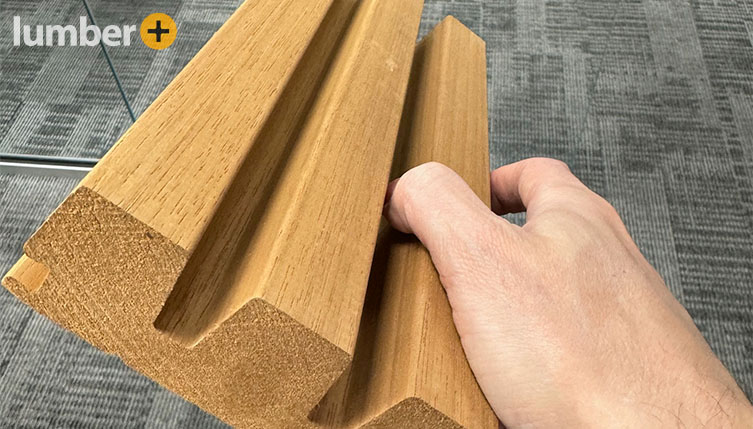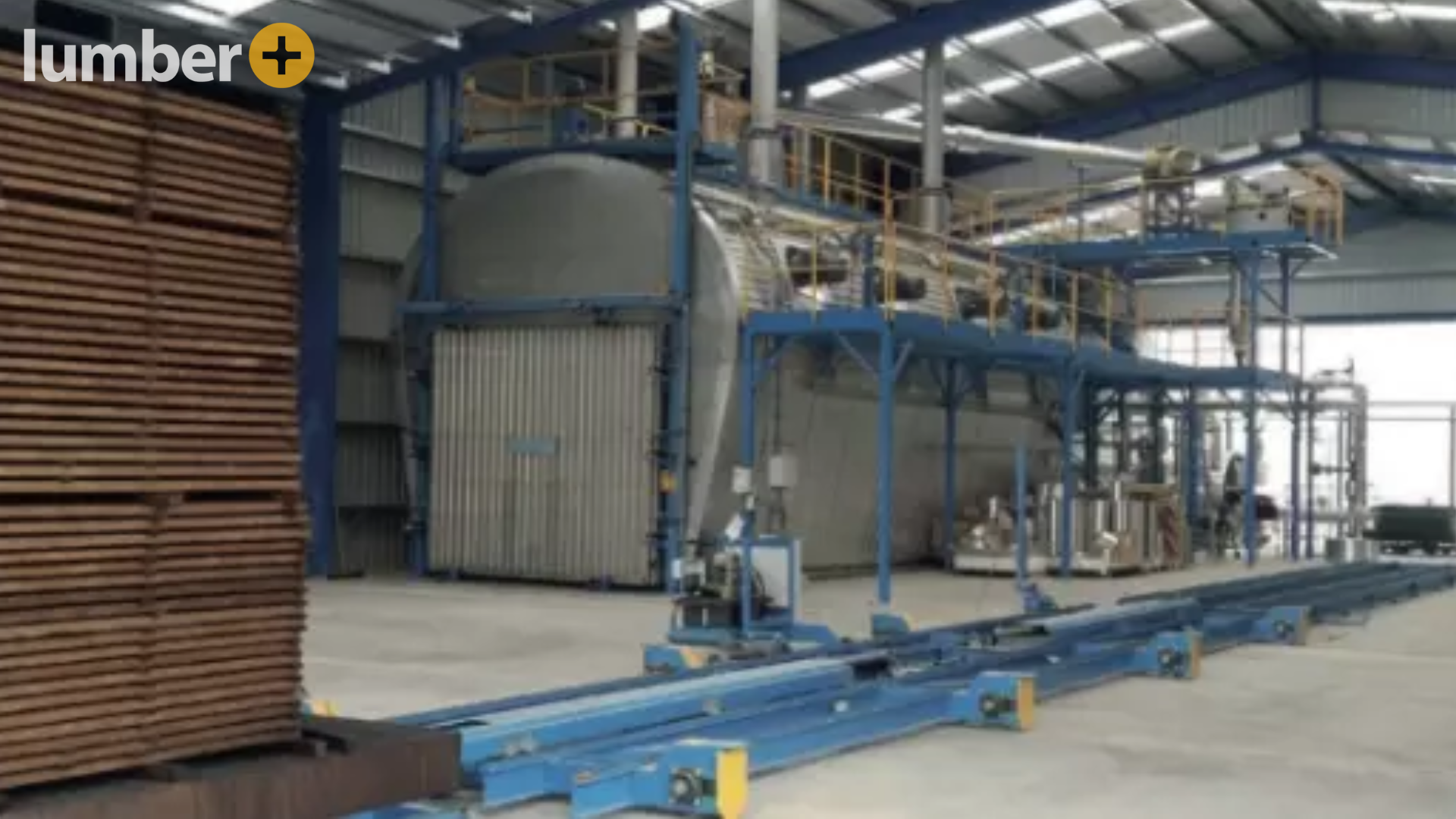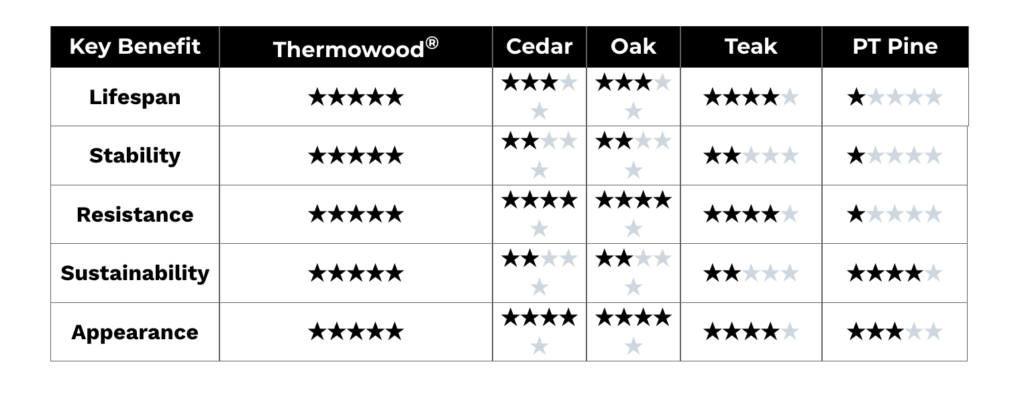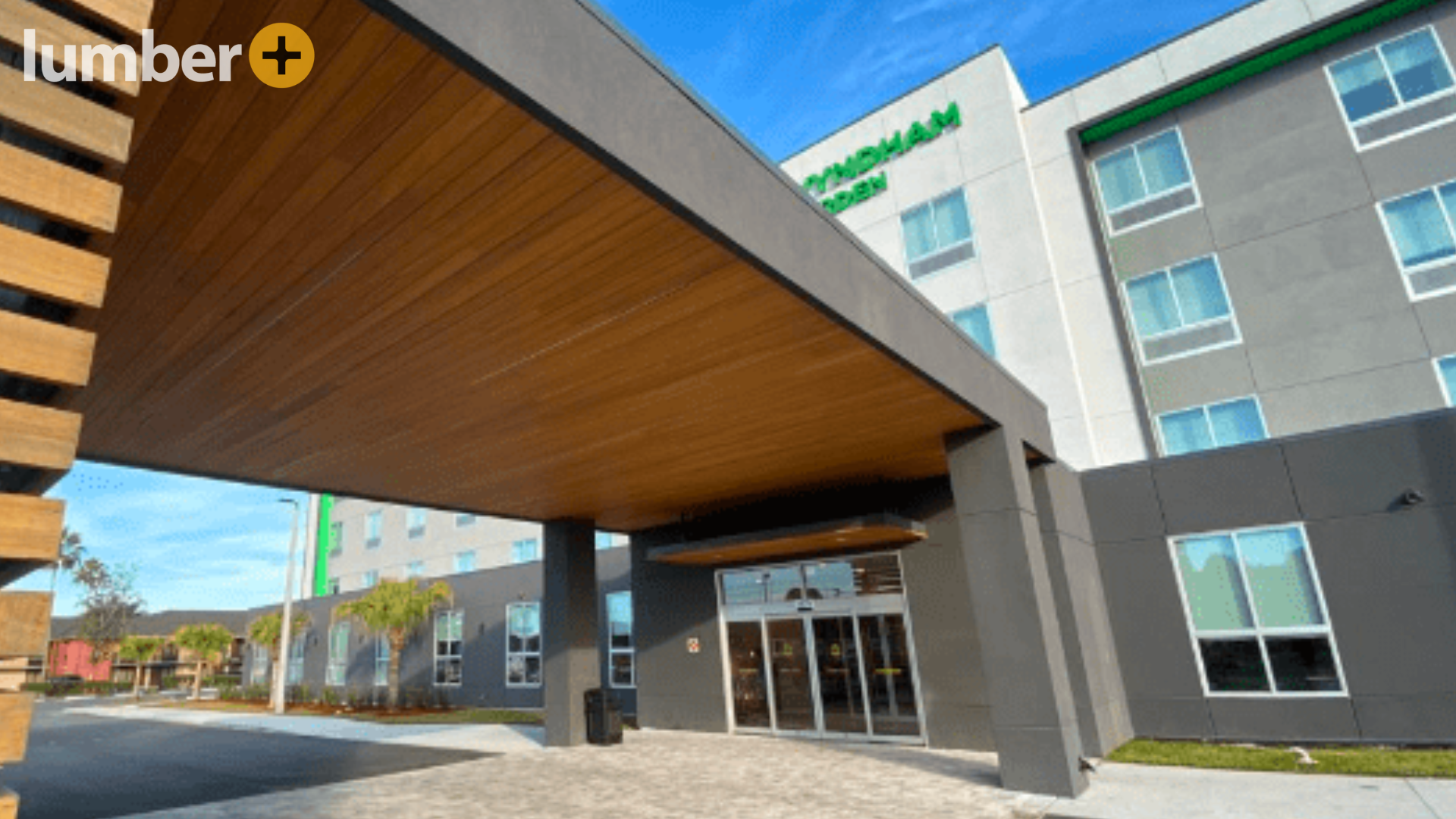The practice of thermally enhancing wood is an ancient technique that, when refined with modern advancements, results in the creation of a more resistant building material. This process significantly boosts the wood’s resilience, stability, and resistance to environmental elements.
However, for wood to truly deserve the title of being a Thermowood®, it needs to undergo enhancement and accreditation by the International Thermowood Association. Trust us, there are numerous inferior brands attempting to enter the market with subpar products and processes. Today, we’ll delve into the intricacies of the genuine thermal modification process to underscore the significance of this innovation and elucidate why Thermowood® stands out as the pinnacle of eco-friendly and durable wood solutions.
What is True Thermowood®?
Powered by Novawood Technology, Thermowood® is not just any thermally treated lumber. It represents the pinnacle of wood modification technologies, a testament to innovation and commitment to quality. The process, developed under rigorous standards and certified by the International Thermowood Association, guarantees that only wood treated by members of this esteemed organization can bear the name Thermowood®.
This distinction is crucial, as it assures consumers of the wood’s enhanced properties and environmental sustainability. Remember: there are several types of thermally modified wood. But there is only one real Thermowood®.

Why Thermowood ® Stands Above Alternatives
While the market offers various thermally modified materials, such as heat-treated bamboo and acetylated wood products, Thermowood®’s unique process, certified by the International Thermowood Association, ensures unmatched quality and sustainability. Its rigorous standards set it apart, making Thermowood® the premier choice for discerning consumers seeking both aesthetic and functional excellence in their projects.
The Journey from Tree to Thermowood®

The path to creating Thermowood® begins with the careful selection and nurturing of trees. Each specimen is chosen based on rigorous criteria, focusing on species, age, and growth conditions, to ensure the wood’s suitability for thermal modification. This preparatory stage guarantees that only the finest wood advances to the transformative stages of heat and steam treatment.
Conditioning
The wood is initially prepared through a conditioning phase where it’s gently heated to lower its moisture content, preparing it for the high temperatures to come.
High-temperature Treatment

In this critical phase, temperatures are gradually increased to above 392°F in a controlled environment. Steam is introduced to prevent the wood from burning, ensuring an even modification throughout.
Cooling Phase
After reaching the peak temperature, the wood is methodically cooled down. Steam is again used during this phase to reintroduce moisture back into the wood, stabilizing it post-treatment.
Final Drying
The last step involves drying the wood to reach its final, desired moisture content, ensuring the wood is stable and ready for use with enhanced durability and resistance properties.
Understanding how careful attention and specific heat treatments improve wood’s qualities, we view Thermowood® not only as a material but as a sustainable innovation. It encourages us to reconsider its uses in construction and design, offering both strength and aesthetics.
The Distinctive Qualities and Benefits of Thermowood®

Choosing Thermowood® for your project is not merely a decision in favor of aesthetics; it’s an investment in longevity and sustainability. The benefits of Thermowood® extend beyond its durability and resistance, offering:
- Enhanced Durability: Resilient against decay, ensuring longevity.
- Improved Dimensional Stability: Minimized expansion and contraction.
- Chemical-Free Preservation: A sustainable choice, safe for all environments.
- Aesthetic Versatility: A rich, beautiful color palette that compliments any design.
These attributes make Thermowood an ideal material for a wide range of applications, from exterior cladding and decking to interior flooring and furniture, offering unparalleled performance and beauty.

Optimizing Thermowood® for Your Needs: Thermo-S vs. Thermo-D
Thermowood®’s versatility is showcased through its two primary treatment classes: Thermo-S and Thermo-D. Thermo-S is designed to maximize stability for interior applications, ensuring the wood remains dimensionally stable and aesthetically pleasing. On the other hand, Thermo-D targets outdoor use, providing enhanced durability against the elements.
This classification allows users to choose the optimal wood type based on the specific demands of their project, whether for indoor elegance or outdoor resilience. Understanding these options empowers you to select the right Thermowood® treatment that aligns with your design and durability requirements.
Sustainability and Environmental Impact of Thermowood®: Enhanced by the International Thermowood Association

Thermowood®’s production, certified by the International Thermowood Association, sets the standard in eco-friendly wood treatment. This process, free from chemical preservatives, uses only heat and steam, minimizing the environmental footprint and supporting sustainable building practices globally.
The Association’s role ensures that choosing Thermowood® contributes to healthier ecosystems and aligns with green building initiatives, making it a conscious choice for projects aiming for both environmental sustainability and excellence.
Elevate Your Projects with Authentic LumberPlus Thermowood®
Choose the unmatched quality of LumberPlus Thermowood® for sustainable and beautiful architectural solutions. Certified by the International Thermowood Association, our Thermowood® guarantees durability and authenticity, reflecting our commitment to excellence.
Contact us today for more information.






